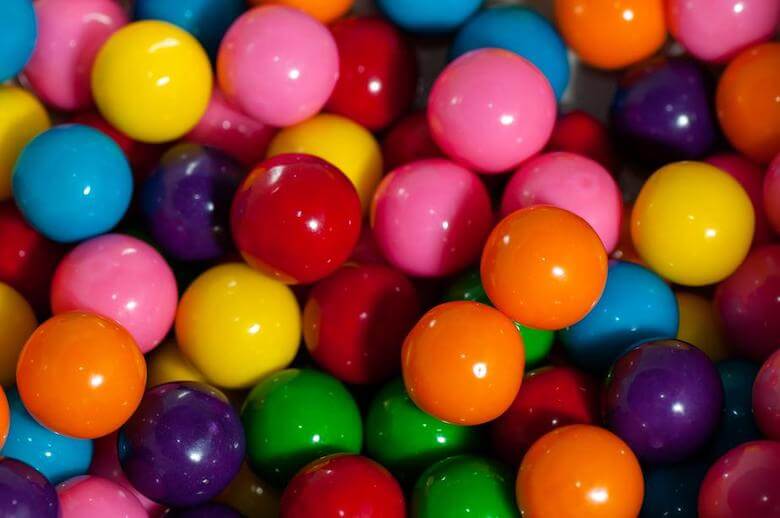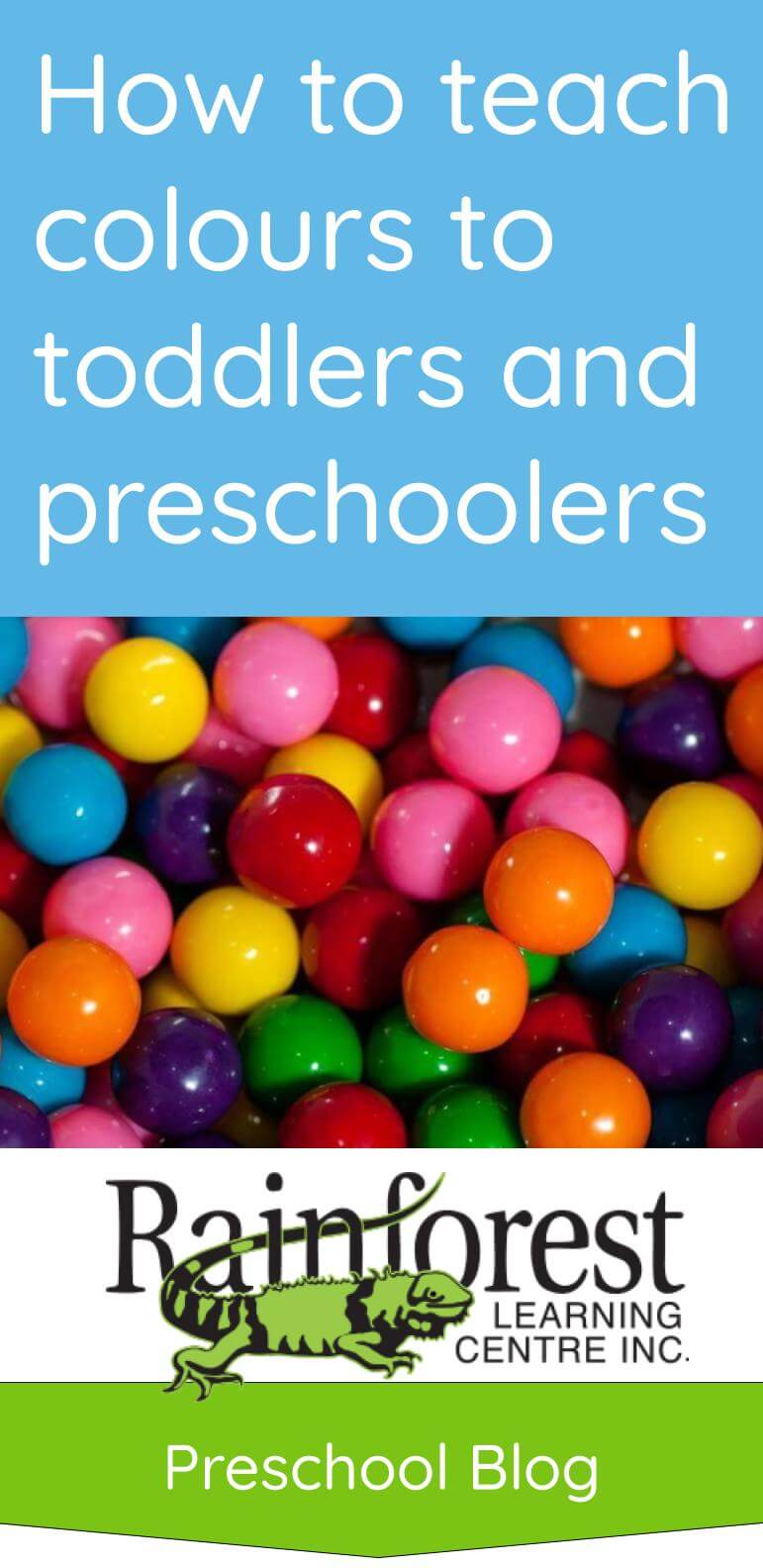
Colours may seem like an obvious part of our world, but that’s only because we’re used to them, as adults. For children, learning how to name and identify colours can be a bit of a challenge, as we’ll see below. The best time to teach colours is in early childhood. So, in this article, we’ll explain how to teach colours to toddlers and preschoolers.
Understand how a child’s mind works: colour doesn’t fit well with our natural way of thinking
Colour naming is largely based on culture and language – it is not a human ‘innate’ thing to identify shades of blue, and how they differ from green, for instance. Groups of people made that up, over time, because we like thinking in ‘categories’ – it’s easier to communicate and make sense of the world that way.
So, colour can be based on context we already have in our minds – much like we saw with “the dress” phenomenon that took the Internet by storm a few years back.
You’ll notice that children who are learning colours for the first time will have a hard time understanding that pink and red are different, or that navy blue is not black. First, they have to figure out what on earth you’re talking about!
That is very logical. In fact, you’ll notice children are logical, literal thinkers, by nature. It’s why they sometimes write some letters backwards, because in theory, some of them are the same thing (like p, q, b and d). It’s also why they follow grammar patterns that might make sense to a new language speaker, but are considered ‘wrong’ by native language speakers. We think they’re talking ‘cute,’ but they’re just following logic.
For example, if your child says something is “broked,” instead of “broken,” that would be logical. They’re trying to follow a grammar pattern. And English is not logical. If something can be “cracked” or “wrecked” why would it be “broken”?
When the whole world is brand new to a child, they will be absorbing things for the first time. It’s overwhelming, though very exciting – which is why the moon and the grass are so fascinating to them, as well as colours.
To learn our cultural language norms and ‘categorical’ thinking, they’ll have to do some ‘unlearning’ (as the article linked-to above explains). They’ll have to figure out that their parents and teachers – who they seek approval from – want them to call blue, blue and green, green. It takes a bit of practice.
So, don’t worry so much if your kid doesn’t get their colours right for a while. It can take until around age 3 to master the more distinct ones. And, it can be around age 5 when they learn different shades of colours, based on naming systems we assign to them in our language groups.
See more on our blog:
- How to be patient with toddlers and preschool-age children
- How to recognize early vision problems in toddlers and preschoolers
Keep it simple: start by teaching primary colours, and colours with more distinctions
Since we’ve established that colour variations can be subjectively-based, it goes without saying that when teaching toddlers and preschoolers about colours, you’ll want to start with just the basics. That is, teach primary colours to this age group first.
The primary colours are:
- Red
- Yellow
- Blue
Thereafter, include secondary colours, which are achieved when you mix the above colours (in painting, at least). They are:
- Orange
- Green
- Purple
Now, whether you start with secondary colours, or primary colours, it doesn’t matter much at this point. The idea is to teach a child how to identify the differences in ‘big’ categories of colour.
Thereafter, you can introduce pink, brown, black, grey, white and so on.
Focus on colour recognition, more than pronunciation, at first
Some young children will only be able to point to colours, and not say them. That is still excellent. It shows they can understand this abstract concept, and are learning to see colours in many contexts.
It should go without saying that some kids will mispronounce the name of colours. That is ok. At this point, for a young toddler, if you start over-emphasizing that, “bawn” is actually, “brown,” you may be bringing in confusion. They may not have the muscle practice to say things correctly at the moment, anyway. But they know what they mean.
It’s fine that you say these colours correctly (and you should). But if a one or two year old says “bawn” and is correctly identifying the colour brown, you can go ahead and give a congratulatory, “yes! That’s right! Good job!” Don’t say, “No, brooowwn,” and cause them to lose focus.
Pronunciation is not the lesson here. Colour recognition is. Once they can differentiate and label colours without thinking twice about it, you can correct their pronunciation, if necessary. But usually, kids will naturally pick up the right pronunciation of all words, in time.
Just enjoy those, “nanas” (bananas), “paasgettis” (spaghetti) and “naganets” (magnets) for now. “Bawn,” “boo” (blue), “pik” (pink), “lallow” (yellow), “wed” (red) and “oooen” (orange) are fine. They’re adorable!
See more on our blog:
Use identical objects that come in different colours to teach colour differences
This works with balloons, flash cards, plastic cups, or anything you can find that is both easy and safe to hold for a child, and identical in form.
This helps a child notice the attribute that makes an object different. When you then emphasize over and over that ‘this cup is yellow,’ and ‘this cup is green,’ and so on, they’ll eventually pick up on those differences. They’ll also recognize that they are an important part of communication.
Later, as you go out of the house or daycare, you can point out ‘real life’ objects that are the same except for colour. For example: “I see a green car, can you see a red car?” or “look at the blue house, and the brown house.”
As the child learns to identify colour as an adjective, you can begin using it in language more. Start naming objects with this adjective, even if identical options are not present. For example, “I see an orange bucket and a yellow shovel! We can play in the grey sand and green grass.”
See more on our blog:
Play simple colour recognition games as a memorization challenge
Part of learning is making mistakes, and then trying again. Since knowing colours is basically memorization, games with tests can help. They make memorization fun by challenging oneself to get better and better.
With little ones, of course, the challenge should be age-appropriate and simple. Don’t give them a stack of 20 crayons and ask them to name them all in one go. That’s too much.
Instead, start with just a few balloons, or balls or play cups. Ask them, “can you find the yellow one?” Or, “where is the red car?” And so on. When they get it right, they get a congratulations – a sign of approval from you, which acts as an emotional reward.
If they get it wrong, don’t show disappointment – it can be a downer on them. Just say, “oh, I think it’s actually, THIS one! This is red, is that what you meant?”
Play this type of game again and again. Use flashcards, books, or, as we mentioned above, play it when you’re out of the house in ‘real life,’ to identify the colours of objects.
You can also ask them what the colour of their food is, or ask them what colour their shirt is every day. Ask about colour all the time, so they know it matters.
A perfect game to spot colours, when they are old enough (around preschool age), is “I spy.” Play, “I spy with my little eye, something that is… white!” The other person then has to look around at what you can both see, within the room’s vicinity, that is white. They keep guessing until they get it right. And then they ‘win.’ Next, it’s their turn to spy!
See more on our blog:
Let children play and construct with colours, to learn colour applications and colour theory too
Children (and all humans), learn best when they are using knowledge, practically. That is, through manipulation of objects, and by integrating activities, speech and other acts around that learning experience. This engages the brain more. It also helps to form memories by association.
In short: this means participating in activities to purposely emphasize colours is an important part of teaching colours to preschoolers and toddlers. Use craft paper, crayons, paint mixing, and so on to do this.
For tactile colour learning, use coloured sand or rice. Let them feel fabrics in different colours. Do face painting or hand-prints in colours. Stamp fun shapes with different coloured ink pads. Make glitter slime and play dough in their favourite colour. Bake a ‘rainbow cake’ or decorate cookies with coloured icing.
Now, through all of this, remind them of the colours they are using by naming them verbally, and asking them to do the same, as they are performing these activities.
To conclude: teaching colours to toddlers and preschoolers involves gradual learning
As we’ve noted above, getting toddlers and preschoolers to learn about colours is not an ‘automatic’ thing that they’ll pick up. It’s something that has to be taught, and re-emphasized, mainly because colour divisions are based on language and cultures, rather than a ‘clear cut’ science.
So, give kids a bit of patience with colour understanding and recognition. And, leave it to you to be the person responsible for repeating the names of colours, and noticing the opportunities to bring them up in conversation. The more these words and labels are reinforced, the more a child will learn that colour differentiations are important.
Of course, eventually, most kids ‘get it,’ even if it comes naturally. It’s not like we’re all colour blind unless we’re taught colours. It’s more that our categorizations of colour need to be ‘agreed upon,’ collectively and socially. Otherwise, the point at which orange, red and pink start and end can be hazy. So, for children, this is part of language learning – it is part of being able to call something what we all understand it to be.
Playing games makes colour learning fun, and applicable. It helps the brain retain this information. Not to mention, it gives you opportunities to spend time with your kids productively.
See related on our blog:
